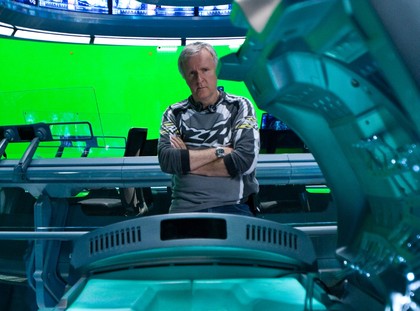Meet the king of 3D

I've met Jim Chabin twice and on neither occasion was he wearing 3D glasses. Admittedly we weren't watching 3D at the time, but I still felt slightly disappointed. As the President and CEO of the International 3D Society, you'd think he'd be obliged to wear his goggles come what may.
Jim Chabin sits at the fulcrum of today's stereoscopic revolution. A former president of The Academy of Television Arts and Sciences, Chabin has some of the biggest names in the business on speed dial, including Jeffery (Dreamworks) Katzenberg and John (Avatar producer) Landau. Indeed, he tells us that it was a conversation with Landau that really provided the impetus for the creation of the Society in the first place.
"I went to John to ask if he felt there was a need for an organisation to support the 3D community," Chabin says, "to help educate on the best practices available."
Landau was emphatic. "He said we needed an organisation that ran 24 hours a day, 7 days a weeks and 365 days a year! So that's when we decided to form the International 3D Society, our mission to advance the art and technology of stereoscopic content. In just a short period of time it's become a global, connected community."
The world's top 3D creators
Chabin says the Society has around "400 members and individuals, including producers, directors and cinematographers." It also has support from studio and cable networks and manufacturers in eight countries. Brian Lenz, director of product development at BSkyB is one such executive member.
"Our partnering organisations include the International Cinematographers Guild, the Visual Effects society and other organisations. Many of our attendees are Academy Awards winners, Emmy winners and have been active in the industry for years."
Sign up for breaking news, reviews, opinion, top tech deals, and more.
In 2010, Chabin organised the first annual 3D Technology & Creative Awards, pointedly lauding Avatar which had been passed over at the Oscars. This year, James Cameron was given the Society's Harold Lloyd Award (named after the great silent comedian), to commemorate his devotion to the cause. "Not many people know that Lloyd was an early supporter of experimental stereoscopic film-making," explains Chabin. "Creating an award in his honour seemed the right thing to do - and what better winner than James Cameron?"

ABOVE: James Cameron is the first recipient of the Society's Harold Lloyd Award for contributions to 3D
Educating Hollywood
Jim Chabin has no doubts about the longevity or significance of 3D. It's here to stay, he insists. The big challenge, he says, is to raise the skill levels of everyone working in the industry: "When you spend so many millions of dollars on 3D, you're going to be concerned that one bad 3D film, one bad 3D experience, could really be an enormous setback to the entire industry."
He says the core vision of the International 3D society is to educate a workforce to make better 3D "at a cost that's going to fill the pipeline as necessary."
To that end the Society approached the Entertainment Technology Centre at the University of Southern California to develop a course that would cover the entire 3D ecosystem. The result was the Immersive Ongoing Stereoscopic 3D Education and Training programme. Designed to bring 2D movie-making professionals up to 3D level, it comprises 19 modules and is taught by experienced industry leaders from Disney, Dreamworks, Panasonic and Sony Pictures.
It's not about glasses, it's about content
While Chabin welcomes the announcement of a Universal glasses standard (aka the Full HD 3D Glasses Initiative, supported by Panasonic, Sony, Samsung and XpanD), he doesn't believe that glasses per se are a disincentive to the adoption of 3D.
"During Avatar, were you really conscious about your glasses?" he reasons. "I'm not sure how many people in the UK have seen the footage of the opening ceremony of the Beijing Olympics in shops, but it is spectacular. 30 seconds into that you become oblivious to wearing glasses."
The age factor
Chabin has a theory as to why 3D divides audiences: it's all about age. If a grandparent takes a six-year old to a 3D movie, they are both going to have a very different viewing experience, he says. This is because "a child's eyes are closer together and their eye muscles are extremely reflexive. Children will always have the greatest 3D experience as a result. At Pixar they regularly bring in youngsters to watch footage with directors. They'll play a clip and the kids will say 'Amazing!', yet the director will not really have seen much at all."
Chabin cites Toy Story 3 as a good example of this phenomenon. "It's common reaction from parents who took their children to see the movie. They may have thought the film was terrific but they really didn't see much 3D. However, their children did. That's not an accident. There's a really critical difference between the way a youngster views 3D and what an adult sees."

Steve has been writing about AV and home cinema since the dawn of time, or more accurately, since the glory days of VHS and Betamax. He has strong opinions on the latest TV technology, Hi-Fi and Blu-ray/media players, and likes nothing better than to crank up his ludicrously powerful home theatre system to binge-watch TV shows.